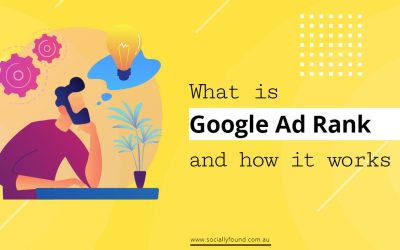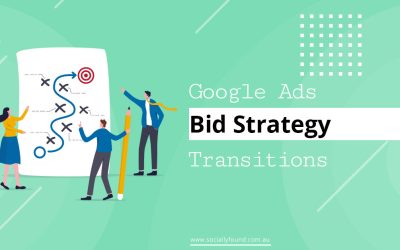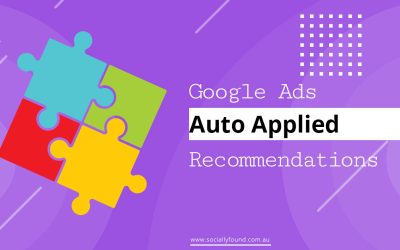In the ever-evolving world of digital marketing, advertisers are constantly searching for new and innovative ways to reach their target audience. Google’s Performance Max campaigns have emerged as a game-changer in this regard, offering advertisers the ability to optimise their campaigns using machine learning and AI.
It is no coincidence that these campaigns have gained significant attention over the past few years, promising increased reach and improved targeting for advertisers. However, as with any new technology or tool, there are benefits and drawbacks to consider when implementing Performance Max campaigns.
While they offer streamlined management and optimisation (learn how to set up Performance Max campaigns with our guide), there is also a lack of control over campaign settings that may result in overspending. This article will explore Performance Max campaign’s pros and cons so that advertisers can make informed decisions about how best to use this technology to achieve their advertising objectives.
By providing an unbiased analysis of this topic using a technical and data-driven writing style, readers will obtain valuable insights into current industry trends. Let’s improve the grammar by adding contractions and using an active voice. These trends include the growing use of AI-generated images and videos in ad platforms. Additionally, readers will understand how automation affects digital marketing practices. Let’s improve the grammar and add contractions. We should also use an active tone of voice.
Increased Reach & Improved Targeting
Performance Max campaigns offer the potential for increased reach and improved targeting, which can have a significant impact on PPC strategy.
The integration of data from shopping and search campaigns, coupled with the use of AI and machine learning, allows for the optimisation of PPC strategy across various channels including YouTube, Display, Search, Discover, Gmail, and Maps.
This goal-based campaign type is tied to conversion goals and optimised based on ROAS or CPA goals. It also creates both search and shopping ads within one campaign.
The benefits of increased reach and improved targeting are highlighted in case studies across various industries including Travel, Telco, and Insurance. These case studies show that Performance Max campaigns can lead to increased conversions at a lower cost than traditional campaigns.
However, it’s important to note that while Performance Max campaigns offer automation and efficiency gains by limiting control over campaigns – this may negatively affect other Google campaign types if not managed properly.
Additionally, exclusions may be more difficult to set than search campaigns due to the wider scope of Performance Max advertising across different channels.
Thus businesses must remain vigilant in ensuring their PPC strategies remain optimised while using Performance Max Campaigns.
Streamlined Management & Optimisation
Streamlining management and optimisation of advertising campaigns can lead to increased efficiency and effectiveness in reaching target audiences. Performance Max campaigns offer a solution for this by automating the process of setting up campaigns, allowing advertisers to save time and resources. PMax leverages machine learning and AI to continuously optimise campaigns, using data-driven attribution to determine which keywords, ads, and campaigns impact business goals most. This enables businesses to achieve their chosen advertising objectives by setting target cost-per-acquisition or return on ad spend.
However, the lack of control in PMax campaigns can be frustrating for PPC marketers accustomed to more traditional campaign types. While PMax offers end-to-end efficiency, it removes much of the control that marketers previously had over their Google Ads campaigns. Audience Signals aren’t a traditional form of targeting but may help reach the right audience. Continuous monitoring is also required to reduce the risk of overspending or being flooded with low-quality conversions and leads.
Overall, while there are benefits to streamlining management and optimisation through PMax campaigns, it’s important for businesses to carefully consider their goals before investing heavily in them.
The Utilisation of Machine Learning & Automation
The increasing utilisation of machine learning and automation in digital advertising has revolutionised the way businesses target and engage with their audience. Performance Max campaigns, launched by Google in November 2021, leverage AI and machine learning to optimise PPC strategies.
By allowing advertisers to run ads across Google’s entire network from a single campaign, PMax campaigns complement keyword-based Search campaigns and help find more converting customers. The data-driven attribution feature determines which keywords, ads, and campaigns have the greatest impact on business goals while continuously optimising the campaign based on chosen objectives such as target cost-per-acquisition or target return on ad spend.
However, PMax campaigns provide less control to advertisers than previous campaign types, making it easier to spend money with Google but potentially leading to overspending or being flooded with low-quality conversions and leads. Advertisers must provide high-quality assets for the AI to work with and optimise feed optimisation for e-commerce ads.
Clear goals are essential for PMax campaigns to succeed, as insights from existing campaigns can be used to help the algorithm learn quicker and reach customers. Despite these challenges, PMax campaigns can futureproof advertising efforts as Google moves towards a keyword-less future while discovering new audiences to tap into and capitalise on.
Wide Range of Ad Formats & Placements
A diverse range of ad formats and placements are available to advertisers using Google’s Performance Max (PMax) campaign type, allowing for increased reach across multiple channels. PMax campaigns advertise across YouTube, Display, Search, Discover, Gmail, and Maps. With the ability to create both search and shopping ads within one campaign and advertising across all Google channels using Smart Bidding, PMax offers end-to-end efficiency.
However, this lack of control can hurt other Google campaign types and requires narrowing the scope to avoid issues with audience signals. Additionally, exclusions may be more difficult to set than in search campaigns.
Despite these drawbacks, PMax is beneficial for eCommerce platforms with longer customer journeys or those seeking new customer segments. It works best with more conversion data and requires allocating at least six weeks for a new campaign to gather sufficient data.
To optimise the campaign further, businesses should provide all available asset types and build out varied asset groups while highlighting promotions and discounts in product descriptions.
Potential Drawbacks to Consider
One must carefully consider the limitations of Google’s Performance Max campaign type before investing significant resources, as its lack of control and limited reporting may lead to challenges in judging incremental value and lift. While they offer a wide range of ad formats and placements, some potential drawbacks include:
- Limited control over campaigns: Performance Max campaigns limit control over bid strategies for different asset groups within a single campaign, making it difficult to optimise ads.
- Difficulty in setting exclusions: Exclusions are more challenging to set than search campaigns, which can impact audience signals.
- Significant investment required: A heavy budget is necessary for an effective PMax campaign, making it less accessible for smaller businesses or those with limited resources.
- ‘Black box’ system: The lack of visibility into the success of smart campaigns can be frustrating for marketers who want greater transparency.
While these limitations may pose challenges, PMax will become the future of Google Ads and remains an innovative tool that leverages AI and machine learning to optimise PPC strategy across YouTube, Display, Search, Discover, Gmail, and Maps. To mitigate potential drawbacks and maximise results, advertisers must thoughtfully design their campaigns using high-quality assets while providing clear goals to help algorithms learn quicker and reach customers effectively.





